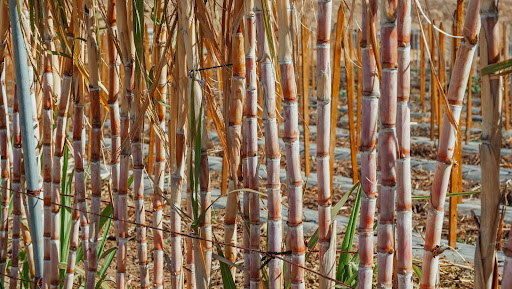People researching beet sugar vs cane sugar often want to know which blends well in beverages.
Discover the Uses and Conveniences of Beet Sugar Vs Cane Sugar in Your Daily Diet
Discovering the distinct high qualities of beet and cane sugar reveals more than simply their sweetening capabilities; it highlights their one-of-a-kind impacts on health and wellness and culinary arts. Beet sugar, understood for its refined taste, is typically preferred in delicate desserts, whereas cane sugar, with its tip of molasses, adds richness to durable recipes. Each type holds its own dietary account and glycemic implications, welcoming a much deeper understanding of their roles in a balanced diet plan and lasting consumption methods.
Beginning and Manufacturing Processes of Beet and Cane Sugar

The unique environments and dirt kinds required for growing sugar beets and sugarcane add to distinctions in their farming practices and geographic distribution, influencing the business economics and sustainability of their manufacturing. beet sugar vs cane sugar.
Nutritional Contrast In Between Beet Sugar and Cane Sugar
Despite originating from different plants, beet sugar and cane sugar are nutritionally extremely comparable, both largely being composed of sucrose. Each provides about 4 calories per gram, translating to approximately 16 calories per teaspoon. Structurally, both sugars are composed of roughly 99.95% sucrose, with very little amounts of other compounds like wetness and trace minerals, which do not dramatically modify their dietary profiles.
Ultimately, when selecting between beet sugar and cane sugar based on dietary material alone, both deal similar advantages and downsides as they are basically kinds of the very same particle-- sucrose, giving fast power without various other nutrients.
Influence on Wellness: Glycemic Index and Caloric Material
Discovering additionally into the effects of beet sugar and cane sugar on wellness, it is very important to consider their glycemic index and caloric content. Both sugars are identified as sucrose, which is composed of glucose and fructose. This composition leads them to have a comparable influence on blood sugar degrees. The glycemic index (GI) of both beet and cane sugar is around 65, classifying them as high-GI foods, which can cause fast spikes in blood sugar levels. This is a critical facet for individuals taking care of diabetic issues or those trying to maintain their energy degrees throughout the day.
Each kind of sugar includes around 4 calories per gram, making their caloric web content equivalent. For those keeping track of caloric consumption, particularly when managing weight or metabolic wellness conditions, comprehending this equivalence is vital (beet sugar vs cane sugar). Nonetheless, excessive usage of any high-calorie, high-GI food can contribute to wellness issues such as weight problems, heart problem, and insulin resistance.
Environmental and Economic Considerations of Sugar Production
Beyond health and wellness effects, the production of beet and cane sugar likewise increases significant environmental and economic concerns. Sugar beet cultivation often tends to call for cooler environments and has a reduced geographical impact contrasted to sugar cane, which flourishes in tropical regions.
Additionally, making use of pesticides and fertilizers in both beet and cane sugar farming can bring about dirt deterioration and contamination, additional impacting biodiversity and local water bodies (beet sugar vs cane sugar). The choice in between growing sugar beet or cane usually pivots on regional environmental conditions and financial aspects, making the sustainability of sugar production a complex concern
Culinary Applications and Taste Distinctions
While the environmental and economic facets of sugar production are indeed substantial, the option between beet and cane sugar also affects culinary applications and taste accounts. Beet sugar, stemmed from the sugar beet plant, is known for its extremely neutral taste. This web link makes it a versatile active ingredient in baking, where it does not modify the taste of other components. It liquifies rapidly and is perfect for usage in cakes, cookies, and pastries.
Walking cane sugar, removed from sugarcane, frequently maintains molasses traces, which give a distinct splendor next page and deepness. The mild variant in moisture content between beet and cane sugar can affect the appearance and consistency of dishes, making cane sugar a preferred choice for specific recipes that profit from its one-of-a-kind residential or commercial properties.

Final Thought
In final thought, both beet and cane sugar have distinct origins and manufacturing procedures, using similar nutritional accounts with mild distinctions in sodium content and taste. While their effect click for more on health and wellness, especially concerning glycemic index and calories, is comparable, the selection in between them typically comes down to environmental, financial aspects, and particular culinary demands. Comprehending these aspects can direct consumers in making educated choices that line up with their health objectives and flavor choices.